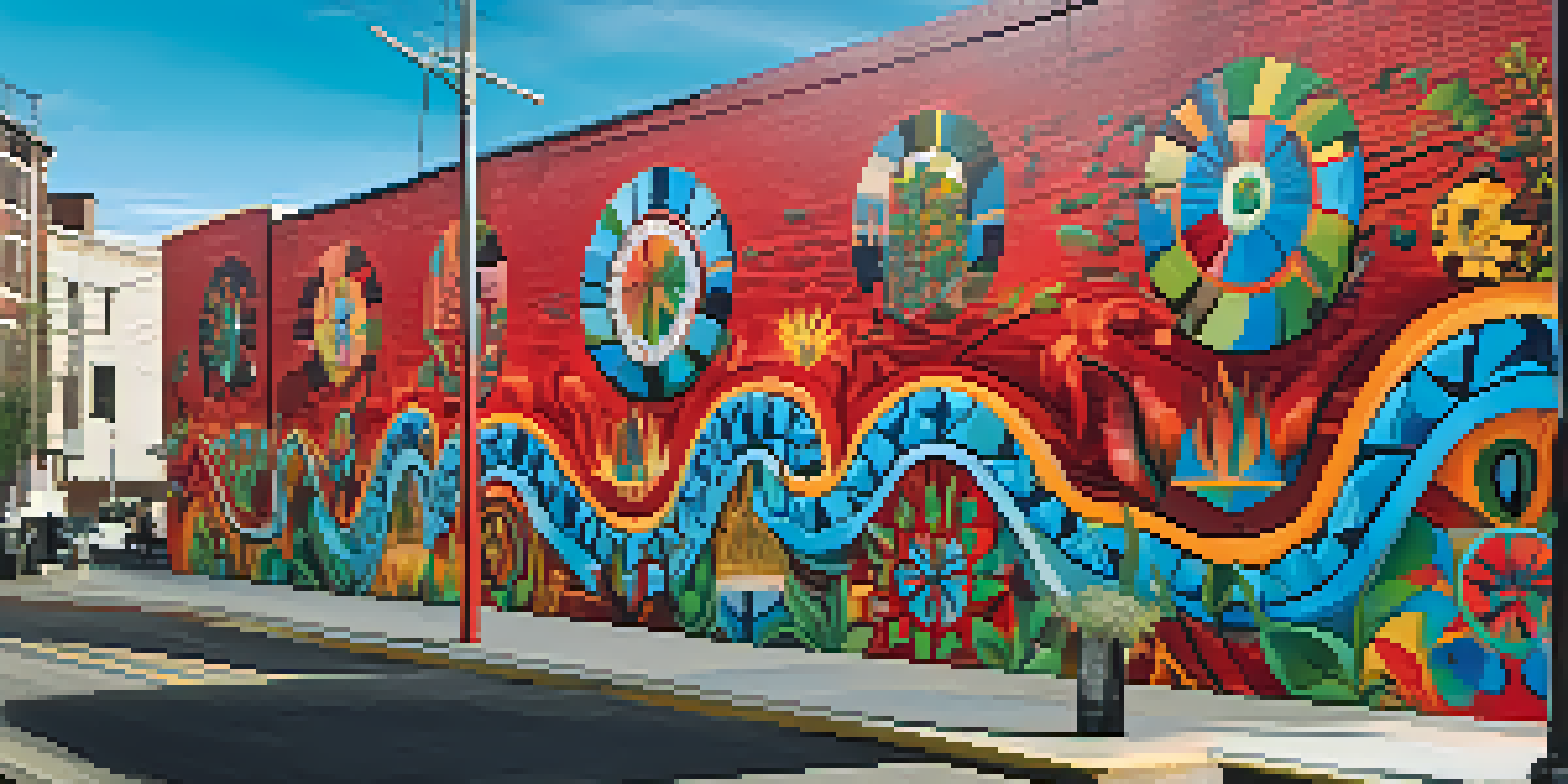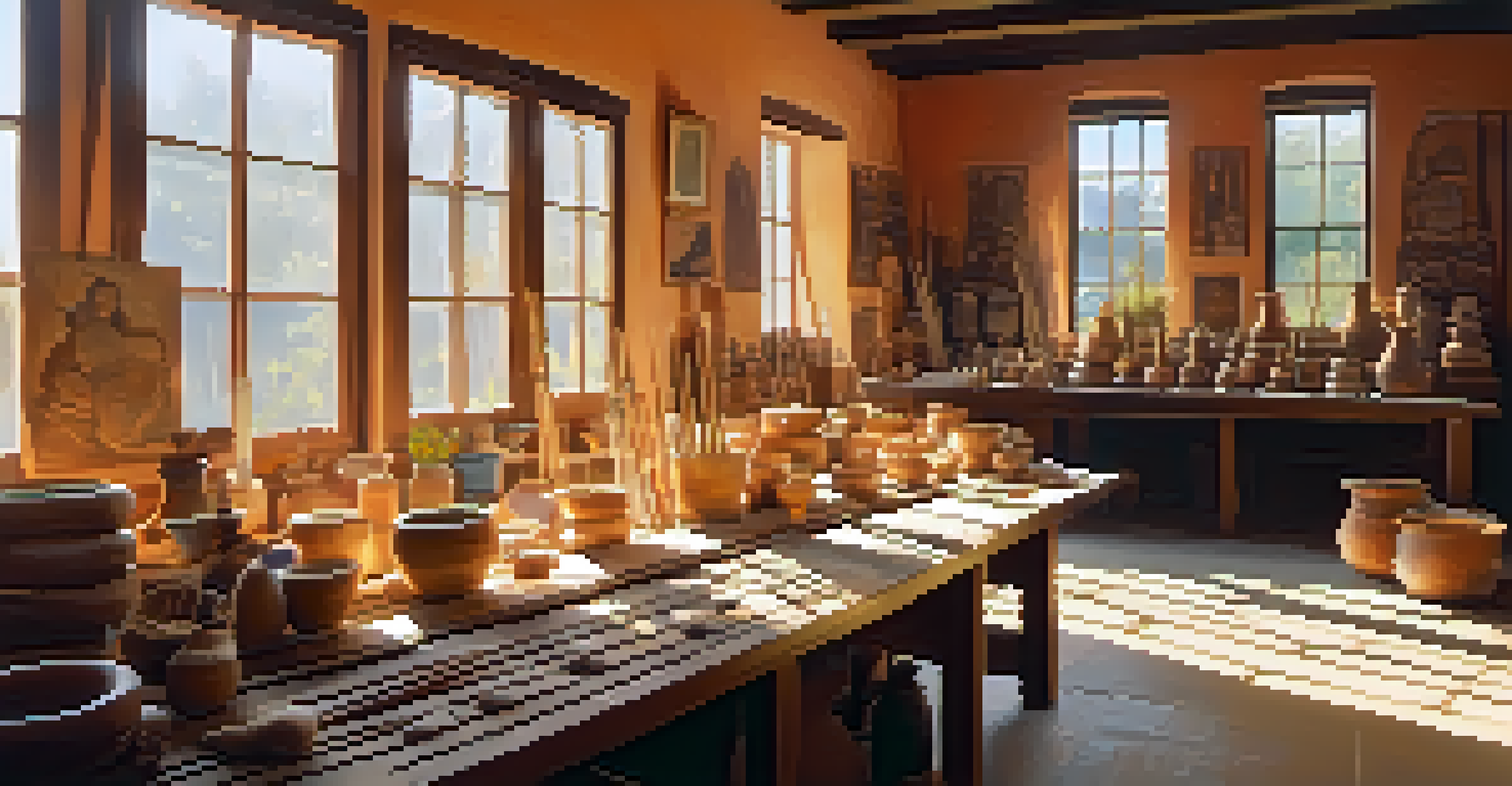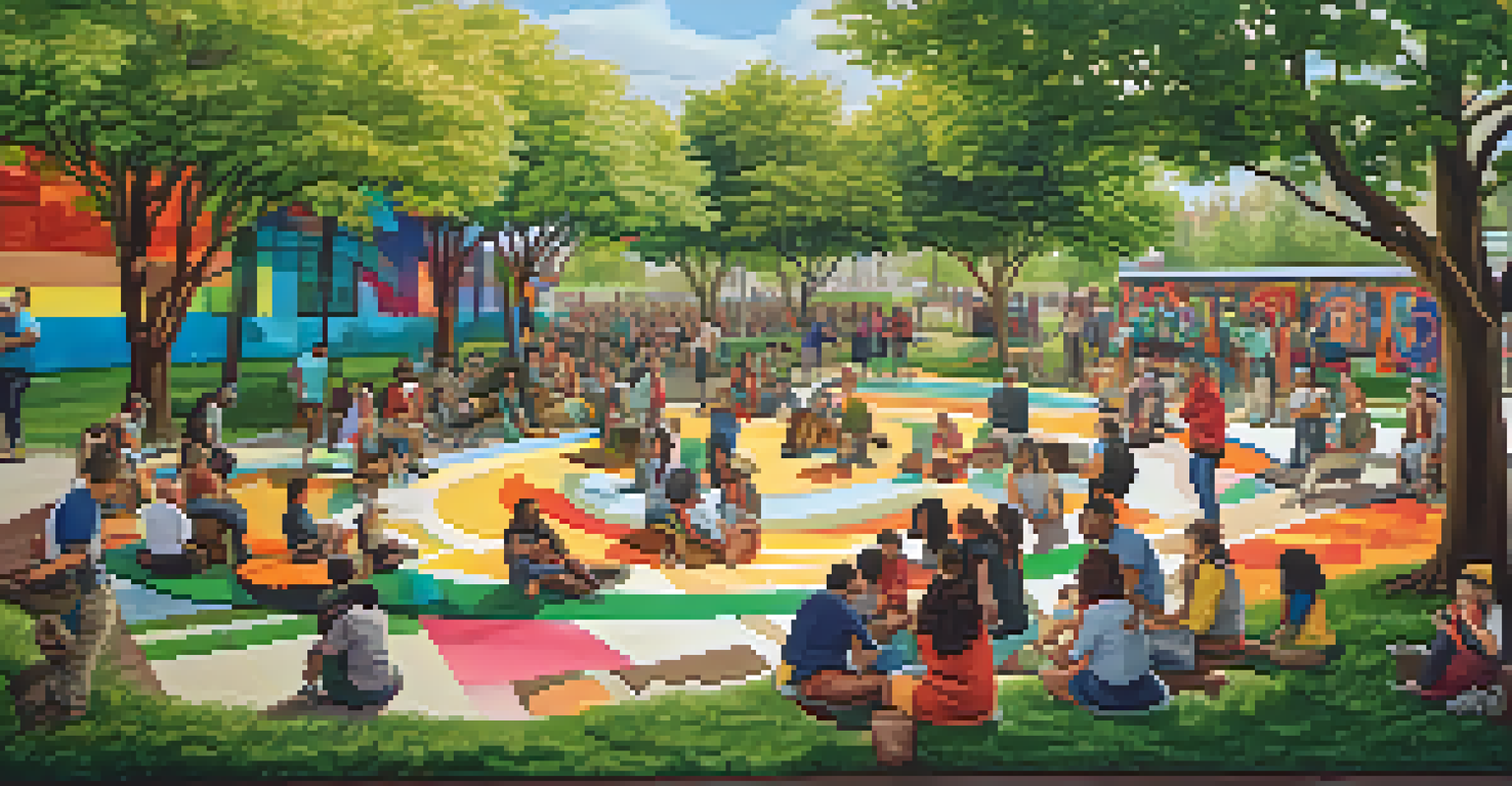Art and Identity: The Representation of Cultural Heritage

Understanding Cultural Heritage and Its Significance
Cultural heritage encompasses the traditions, languages, and arts passed down through generations. It serves as a shared identity for communities, allowing individuals to connect with their roots. By preserving these elements, societies maintain a sense of belonging and continuity amidst change.
Art is the most beautiful of all lies.
Art plays a pivotal role in representing cultural heritage, as it can capture the essence of a community's values and experiences. From traditional crafts to contemporary expressions, art tells stories that resonate with both individuals and groups. It acts as a visual language that transcends barriers, fostering understanding and appreciation.
For example, Indigenous art often reflects deep spiritual connections to the land and ancestors. Each piece can serve as a reminder of history and identity, making it a powerful tool for both cultural preservation and education. Through art, communities can assert their uniqueness while navigating a globalized world.
Art as a Reflection of Identity in Diverse Communities
Art is not just a representation of cultural heritage; it also reflects the evolving identities within diverse communities. As individuals interact with different cultures, their artistic expressions may blend elements from various traditions. This fusion can lead to the creation of new art forms that embody a hybrid identity.

For instance, street art in urban areas often combines local traditions with contemporary themes, creating a dialogue between the past and present. These vibrant murals can highlight social issues, celebrate cultural pride, and foster community engagement. In this way, art becomes a canvas for expressing the multifaceted nature of identity.
Art Preserves Cultural Heritage
Art acts as a vital tool for preserving cultural heritage by capturing traditional practices and ensuring future generations appreciate their roots.
Moreover, artists from immigrant backgrounds frequently use their work to navigate and negotiate their dual identities. By integrating symbols and narratives from their heritage into their art, they contribute to a richer cultural tapestry that reflects the complexities of modern life. This practice enriches our understanding of identity in a globalized society.
The Role of Art in Preserving Cultural Heritage
Art serves as a vital tool for preserving cultural heritage, particularly in times of rapid change. As globalization influences local customs, art can act as a safeguard, capturing traditional practices that might otherwise fade away. By documenting and celebrating these elements, artists ensure that future generations can appreciate their cultural roots.
Cultural heritage is the bridge that connects the past with the future.
For example, many artists engage in traditional crafts, such as weaving or pottery, to keep these skills alive. By combining age-old techniques with modern aesthetics, they create pieces that resonate with contemporary audiences while honoring their heritage. This approach not only preserves the craft but also elevates its status in a modern context.
Additionally, art institutions and museums play a crucial role in safeguarding cultural artifacts. They provide spaces for dialogue and education, allowing visitors to engage with diverse cultures. Through exhibitions and community programs, these institutions help raise awareness about the importance of preserving cultural heritage through artistic expression.
Art as a Medium for Social Commentary and Change
Art has the power to provoke thought and inspire change, making it an essential medium for social commentary. Artists often use their work to address pressing issues related to cultural identity and heritage. By highlighting injustices or celebrating diversity, they can spark conversations that challenge societal norms.
Take, for example, the works of contemporary artists like Ai Weiwei, who uses his art to comment on human rights and freedom of expression. His powerful installations resonate globally, urging viewers to reflect on their own cultural contexts. This type of art not only raises awareness but also fosters empathy and understanding across different cultures.
Art Reflects Evolving Identities
Art reflects the evolving identities within diverse communities, allowing for the blending of traditions and the creation of new forms of expression.
Furthermore, community-based art projects can empower marginalized voices by providing a platform for expression. These initiatives often encourage collaboration among artists and community members, allowing for authentic storytelling. In this way, art becomes a vehicle for change, promoting inclusivity and social justice.
Globalization’s Impact on Cultural Identity and Art
Globalization has significantly impacted cultural identity, often leading to a blending of traditions and artistic styles. While this can foster cross-cultural dialogue, it may also threaten the uniqueness of local heritages. As artists draw inspiration from various sources, the challenge lies in maintaining authenticity while engaging with global influences.
For instance, contemporary fashion designers might blend traditional textiles with modern designs, creating garments that reflect a globalized identity. However, this fusion can sometimes dilute the significance of the original cultural elements. It's essential for artists to navigate these waters carefully, honoring their heritage while embracing innovation.
Moreover, the rise of digital platforms has allowed artists to share their work globally, creating opportunities for cultural exchange. Social media, for example, enables artists to showcase their heritage to a wider audience, fostering appreciation for diverse traditions. However, this accessibility also raises questions about ownership and representation in a global context.
The Interconnection of Art, Identity, and Memory
Art is deeply intertwined with memory, as it often evokes personal and collective experiences. Through artistic expression, individuals can explore their identities and reflect on their cultural heritage. This connection between art and memory allows for a deeper understanding of oneself and one's place in the world.
For example, many artists create works that draw from their childhood memories, incorporating symbols and themes that evoke nostalgia. This personal narrative not only connects the artist to their heritage but also resonates with viewers who share similar experiences. It's a beautiful reminder of how art can bridge generational gaps and foster connections.
Art as a Vehicle for Change
Art serves as a powerful medium for social commentary, provoking thought and inspiring change by addressing issues of cultural identity and inequality.
Additionally, community art projects that celebrate shared histories can transform public spaces into vibrant expressions of cultural memory. Murals, sculptures, and installations serve as landmarks that remind us of our roots, encouraging conversations about identity and belonging. In this way, art becomes a powerful tool for collective remembrance and identity formation.
Conclusion: The Future of Art and Cultural Identity
As we look to the future, the relationship between art and cultural identity will continue to evolve. Emerging artists will likely explore new mediums and technologies to express their heritage, creating innovative forms of representation. This evolution holds the potential for exciting collaborations and cross-cultural dialogues that enrich our understanding of identity.
Moreover, as societies become more diverse, the conversations around cultural identity in art will grow increasingly complex. Artists will need to navigate these dynamics thoughtfully, ensuring that their work honors the traditions that shape them while also embracing the influences of a globalized world. This balance will be essential for authenticity and respect.

Ultimately, art will remain a vital means of exploring and expressing cultural heritage. By valuing diverse narratives and encouraging open dialogue, we can foster a richer appreciation of the intricate tapestry of human identity. In doing so, we celebrate the beauty of our differences while recognizing the shared threads that unite us all.